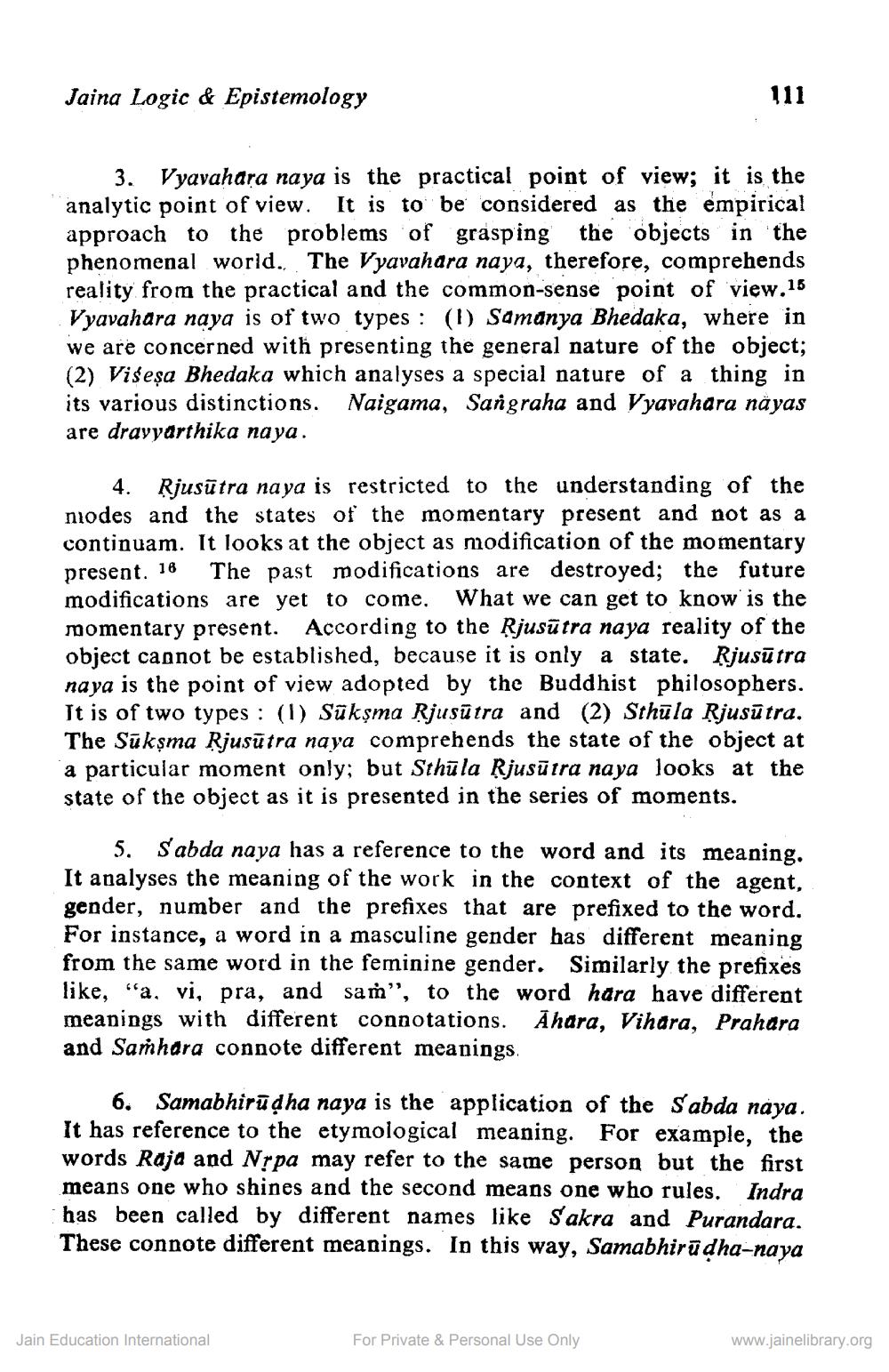________________
Jaina Logic & Epistemology
111
3. Vyavahara naya is the practical point of view; it is the analytic point of view. It is to be considered as the empirical approach to the problems of grasping the objects in the phenomenal world. The Vyavahara naya, therefore, comprehends reality from the practical and the common-sense point of view.16 Vyavahara naya is of two types : (1) Samanya Bhedaka, where in we are concerned with presenting the general nature of the object; (2) Viseșa Bhedaka which analyses a special nature of a thing in its various distinctions. Naigama, Sangraha and Vyavahara näyas are drayyarthika naya.
4. Rjusūtra naya is restricted to the understanding of the niodes and the states of the momentary present and not as a continuam. It looks at the object as modification of the momentary present. 18 The past modifications are destroyed; the future modifications are yet to come. What we can get to know is the momentary present. According to the Rjusūtra naya reality of the object cannot be established, because it is only a state. Rjusūtra naya is the point of view adopted by the Buddhist philosophers. It is of two types : (1) Sūkşma Rjusūtra and (2) Sthūla Rjusūtra. The Sūkşma Rjusūtra naya comprehends the state of the object at a particular moment only; but Sthūla Rjusūtra naya looks at the state of the object as it is presented in the series of moments.
5. S'abda naya has a reference to the word and its meaning. It analyses the meaning of the work in the context of the agent, gender, number and the prefixes that are prefixed to the word. For instance, a word in a masculine gender has different meaning from the same word in the feminine gender. Similarly the prefixes like, "a, vi, pra, and saṁ", to the word hara have different meanings with different connotations. Āhara, Vihara, Prahara and Samhara connote different meanings
6. Samabhirūdha naya is the application of the Sabda naya. It has reference to the etymological meaning. For example, the words Raja and Nrpa may refer to the same person but the first means one who shines and the second means one who rules. Indra has been called by different names like Sakra and Purandara. These connote different meanings. In this way, Samabhirūdha-naya
Jain Education International
For Private & Personal Use Only
www.jainelibrary.org




